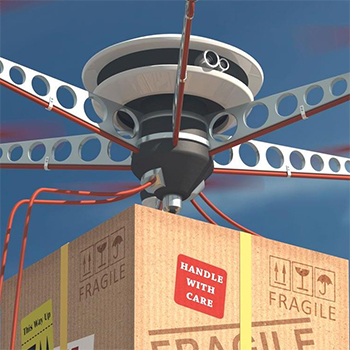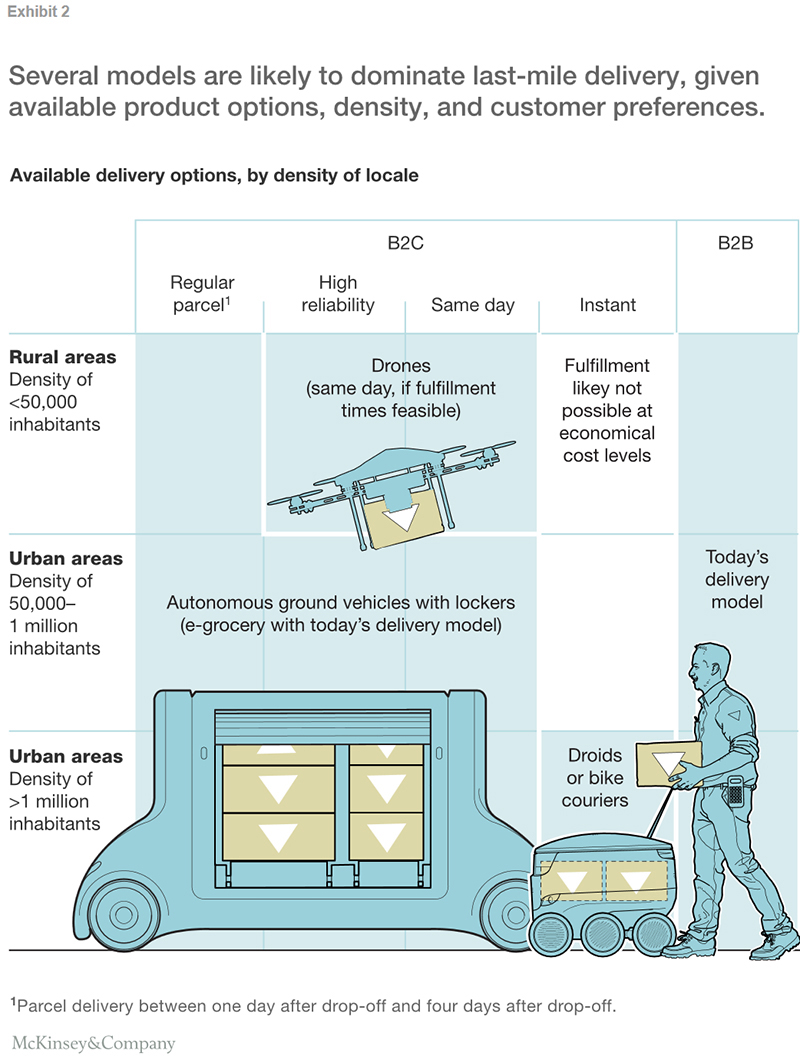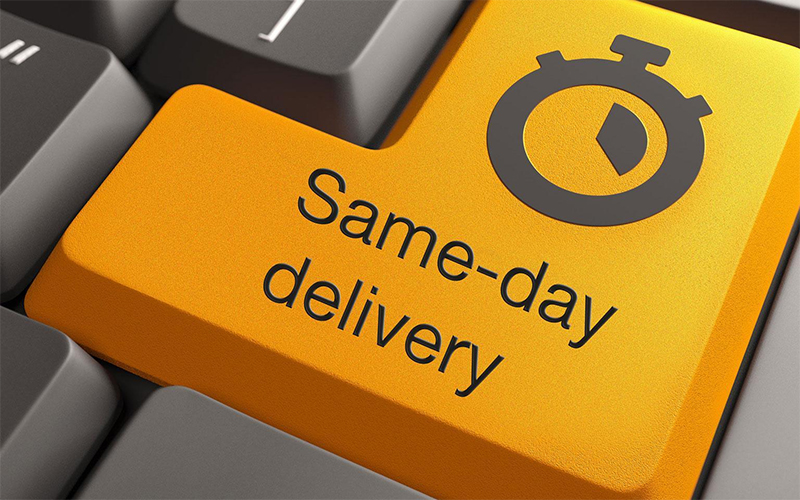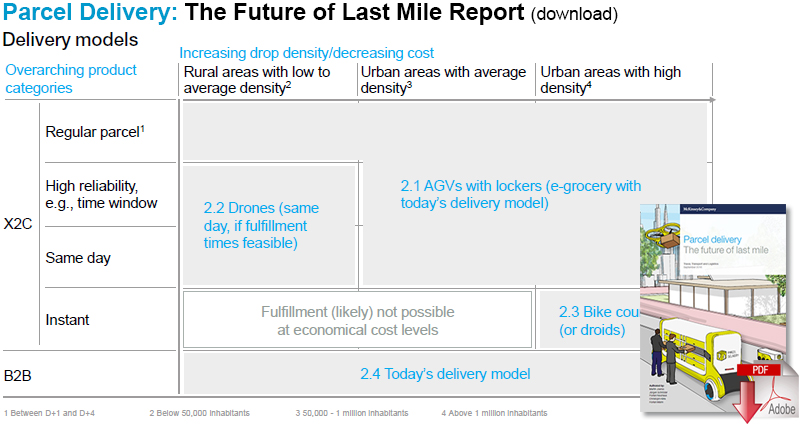Customer Demands Reshaping Last-Mile Delivery
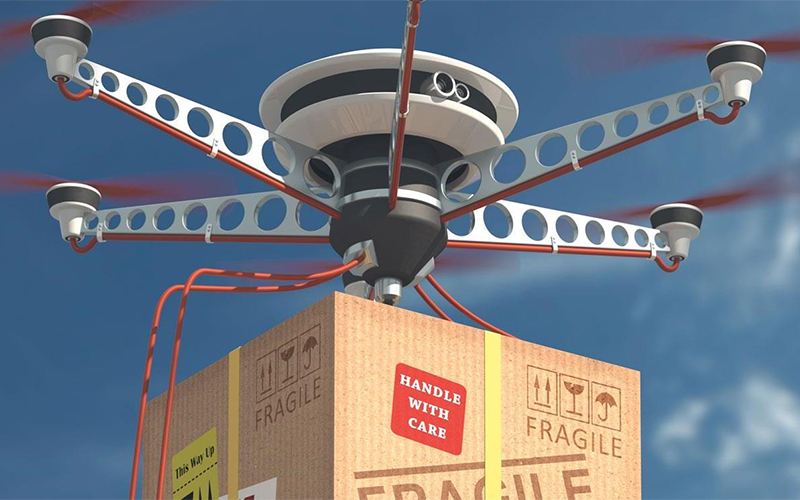
The last mile is seeing disruption from new business models that address customer demand for ever-faster delivery, as well as new technologies such as drones and autonomous ground vehicles.
Last-mile delivery, especially of parcels, has recently received lots of attention in the media and from investors.
The cost of global parcel delivery, excluding pickup, line-haul, and sorting, amounts to about €70 billion, with China, Germany, and the United States accounting for more than 40 percent of the market.
And not only is the market large, but it’s also highly dynamic, with growth rates in 2015 of between 7 and 10 percent in mature markets (such as Germany and the United States) and more than 100 percent in developing markets.
The biggest driver of this growth, not surprisingly, is e-commerce, which has shifted market share from the B2B to the B2C segment.
With the rise of e-commerce, consumer preferences have grown increasingly important in the formerly business-oriented parcel-delivery market. Large e-commerce players, as well as various start-ups, have identified last-mile services as a key differentiator. In fact, the variety of delivery options and the perceived quality of the delivery service are major decision-making criteria for online customers and hence directly affect e-commerce players’ success in the marketplace.
With this in mind, vendors are working hard to offer the best customer experience possible, especially by improving delivery times. To gain a better understanding of what customers actually prefer, we conducted a survey of more than 4,700 respondents in China, Germany, and the United States. We used conjoint analysis to better understand consumers’ relative preferences for different delivery options, including their willingness to pay (Exhibit 1). Nearly 25 percent of consumers are willing to pay significant premiums for the privilege of same-day or instant delivery. This share is likely to increase, given that younger consumers are more inclined (just over 30 percent) to choose same-day and instant delivery over regular delivery.
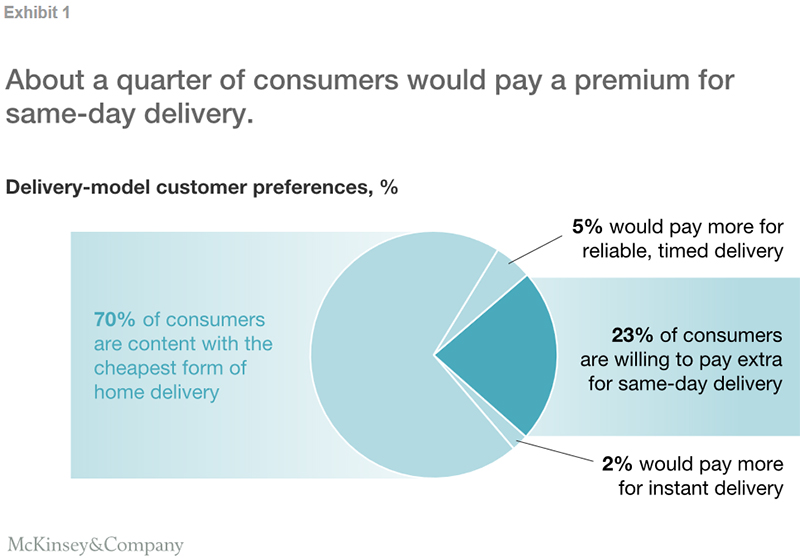
But despite the large share of consumers willing to pay extra for same-day delivery, only 2 percent said they would pay sufficiently more to make instant delivery viable (assuming the consumer would have to bear the additional cost of this extremely fast service). In any event, same-day and instant delivery will likely reach a combined share of 20 to 25 percent of the market by 2025, and they are likely to grow significantly further, especially if the service is extended to cover rural areas to some extent.
Driven by consumer preferences and drop density (for example, longer distances in rural areas greatly increase last-mile costs), three consumer delivery models - also known as X2C, or some form of goods delivered to consumers - are likely to dominate the last mile in the future: autonomous ground vehicles with parcel lockers, drones, and bike couriers (Exhibit 2). Two of these will be characterized by a high degree of automation and asset intensity. Autonomous vehicles, including drones, will deliver close to 100 percent of X2C items and 80 percent of all items.
Bike couriers will deliver only about 2 percent in the relatively small instant-delivery segment. Traditional delivery will account for the remaining items, approximately 20 percent. Big B2B customers with high drop factors - the number of parcels dropped per stop or recipient - and special delivery requirements, such as hanging goods, will favor mostly human delivery as we know it today. The same is true for e-grocery delivery, as people will still want crates to be carried up to their apartments and returns to be handled directly.
The speed at which the outlined last-mile-delivery scenarios can be reached will vary, depending on public sentiment, regulation, and labor costs. Early adoption of these new autonomous-delivery models will concentrate in developed countries, where labor costs are high enough to make the return on investment significant. In the developing world, however, labor costs will likely remain low enough to prevent any major technology change from affecting the last mile over the next five to ten years.
Regulation will need to undergo substantial change (for example, regarding liability for damages caused by autonomous vehicles), but such challenges will be overcome in the next ten years, driven by the influence of the large automobile companies. At the same time, public opinion concerning autonomous vehicles, as well as drones, has already started to shift - with 60 percent of consumers indicating that they are in favor of, or at least indifferent to, drone delivery. Therefore, there is little to suggest that the transformation will not kick in over the next decade, at least in the developed world.
What does that mean for players in the market? If companies operate in a country with high labor costs, they must start thinking about the future of the last mile now, as they need to lay foundations in HR, IT, and the investment strategy. Those that fail to act soon will forfeit their chance to be among the contenders for the last mile in the long term.
About the Authors
Martin Joerss is a senior partner in McKinsey’s Beijing office, Florian Neuhaus is an associate partner in the Munich office, and Jürgen Schröder is a senior partner in the Düsseldorf office. The authors wish to thank Christoph Klink and Florian Mann for their contributions to this article.
Source: McKinsey Insights
Related Article Same-Day Delivery: The Next Evolutionary Step in Parcel Logistics
Article Topics
McKinsey News & Resources
2024 Global Logistics Outlook: Crisis mode lingers An Increasingly Digital Procurement Function Lacks Talent Required for Future Needs New McKinsey survey highlights steps companies are taking to stay on top on global trade processes 2023 State of Logistics: Third Party Logistics (3PL) Ocean Cargo: Carriers, shippers continue to navigate choppy waters Could Climate Become The Weak Link In Your Supply Chain? 7 Actions to Drive Demand Planning During the COVID-19 Pandemic and Prepare for the “Next Normal” More McKinseyLatest in Transportation
Talking Supply Chain: Doomsday never arrives for Baltimore bridge collapse impacts Amazon Logistics’ Growth Shakes Up Shipping Industry in 2023 Nissan Channels Tesla With Its Latest Manufacturing Process Why are Diesel Prices Climbing Back Over $4 a Gallon? Luxury Car Brands in Limbo After Chinese Company Violates Labor Laws The Three Biggest Challenges Facing Shippers and Carriers in 2024 Supply Chain Stability Index: “Tremendous Improvement” in 2023 More Transportation